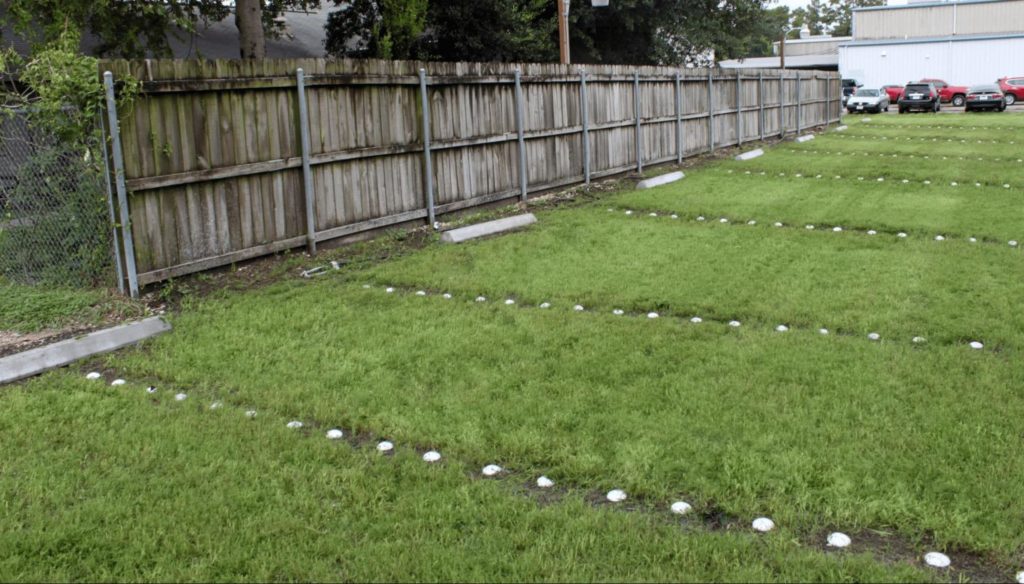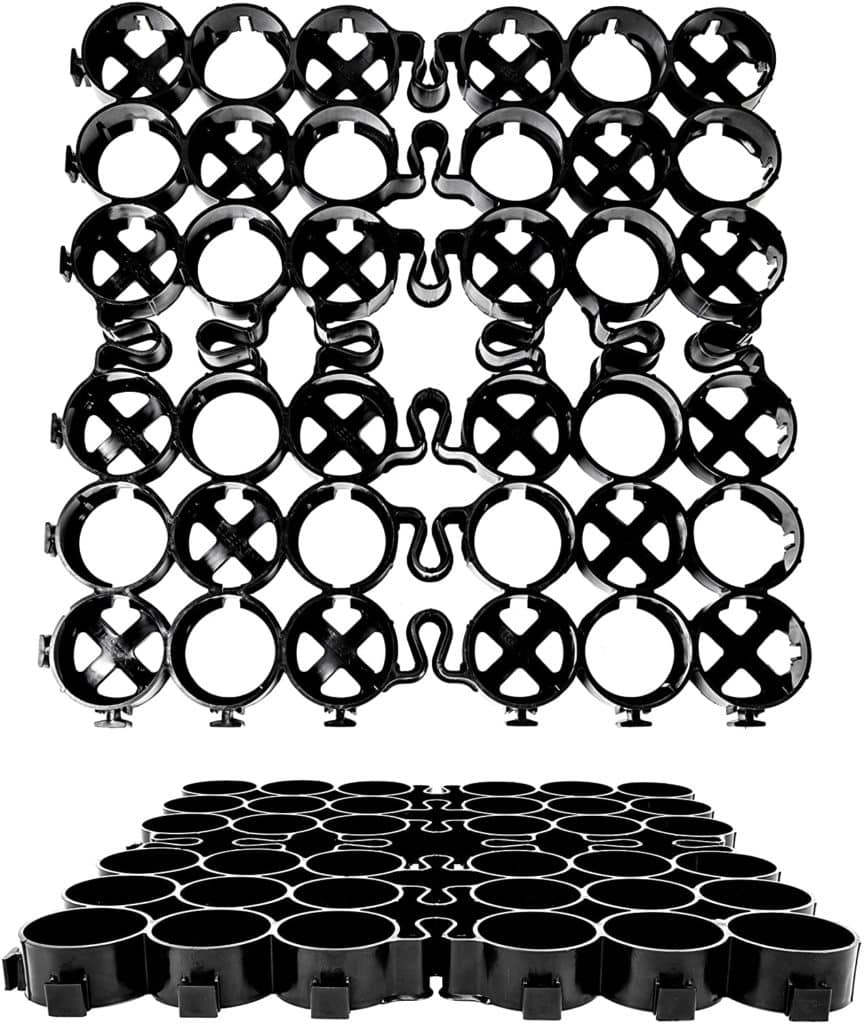Parking on grass may be preferable for many reasons. You might not have the time or resources to have pavement installed, you want to choose the most eco-friendly parking option, or you may just prefer the aesthetic.
Whatever the reason you have for using grass as a long-term parking solution, you need a way to sustain your grass so that it doesn’t become a ripped-up mud pit.

When it comes to stabilizing a grassy area for vehicle parking, there are a few options you have to choose from, but using a parking mat for grass is one of the most common.
In case you’re interested in using grass parking mats, let’s take a look at the pros and cons and what might work as a better solution.
Why Use Grass Mats for Parking?
In short, regular grass cannot handle the rigors of having vehicles consistently parked on it. Leaving vehicles parked on regular grass can cause discoloration of the grass and bald spots. Auto fluid leaks can also damage the grass and pollute the soil.
The weight and pressure of the tires can tear up the grass and cause ruts in the soil as well. This not only ruins the appearance of the grass but it can cause cleanliness issues for those who park on it, as well as damage to vehicles and injuries to people.
The Benefits of Grass Mats
Grass mats are typically used to prevent grass from getting torn up. A mat for parking on grass provides a barrier between the grass and the vehicle tires that allows the grass to last longer and provide a more efficient surface for driving and parking.
Grass mats are usually permeable and allow water to drain through them and filter through the soil, back into the water table where it belongs. They are typically cheap and easy to install. Many types of grass mats and mesh allow grass to grow up and through them.
The Downsides of Grass Mats and Mesh
There are a variety of downsides to using a car parking mat for grass to provide vehicle parking. For starters, the mats and/or mesh aren’t as durable as materials like hard plastic pavers. They can be thin, and eventually tear after enough use. They also tend to be vulnerable to pressure from especially heavy vehicles, often sinking into the soil and allowing ruts to slowly develop. In short, they aren’t solid enough.
A mat for grass parking is also typically placed over the top of the grass, and relies on the material that interacts with the grass to provide traction. The mats do not sink into the soil deep enough or may not sink in at all. Despite claims of superior stability and traction, a lack of grip can cause mats and mesh to slip and become displaced over time.
Grass mats and mesh also tend to allow for the buildup of mold and mildew underneath them. This is attributable to both the materials they are made from and the fact that there’s often no penetration of the soil, especially if you opt for a non-permeable type of mat. Permeable varieties are less susceptible to these issues.
A Superior Alternative to Grass Mats
Roll-out pavers like TRUEGRID ROOT and others are the perfect alternative to grass mats. They provide all of the benefits of mats and mesh, without many of the drawbacks. For instance, TRUEGRID ROOT pavers are made from 100%-recycled plastic, which makes them much more eco-friendly than the average grass parking mat.

They’re also a bit sturdier than mesh, which allows them to handle much more weight and pressure over a longer period of time. They are so durable they can last up to 60 years with almost zero maintenance whatsoever.
Unlike mesh, the TRUEGRID paving system will never tear or become displaced. TRUEGRID ROOT is essentially impervious to temperature extremes, UV rays, moisture intrusion, insect damage, and any other natural deteriorating factor you can think of.

It is also equally as easy to install as a grass mat or mesh. You simply lay the robust but flexible pavers out over the intended area and heavy roll over them to press them into the ground. Each section of TRUEGRID ROOT pavers grip into the soil to firmly secure the pavers. TRUEGRID ROOT also has gripping teeth at the surface for improved traction.
This not only prevents slipping, but it also helps to prevent the pavers from sinking into the soil further than intended, as can happen with mats or mesh when confronted with heavy vehicles. Despite being one of the most durable grass paving solutions on the planet, TRUEGRID ROOT pavers can be rendered nearly invisible if you want.
You need only allow your grass to grow up through them to a certain length and you’ll have a sturdy, durable, eco-friendly paving solution that’s as invisible to the naked eye as you need it to be.
TRUEGRID Pavers Are the Best Alternative to Grass Mats, Hands Down
If you need a solid, long-term solution for parking on grass and you don’t want to deal with the many downsides of grass mats and mesh, contact TRUEGRID today to speak with a pavement professional who can get you started.



